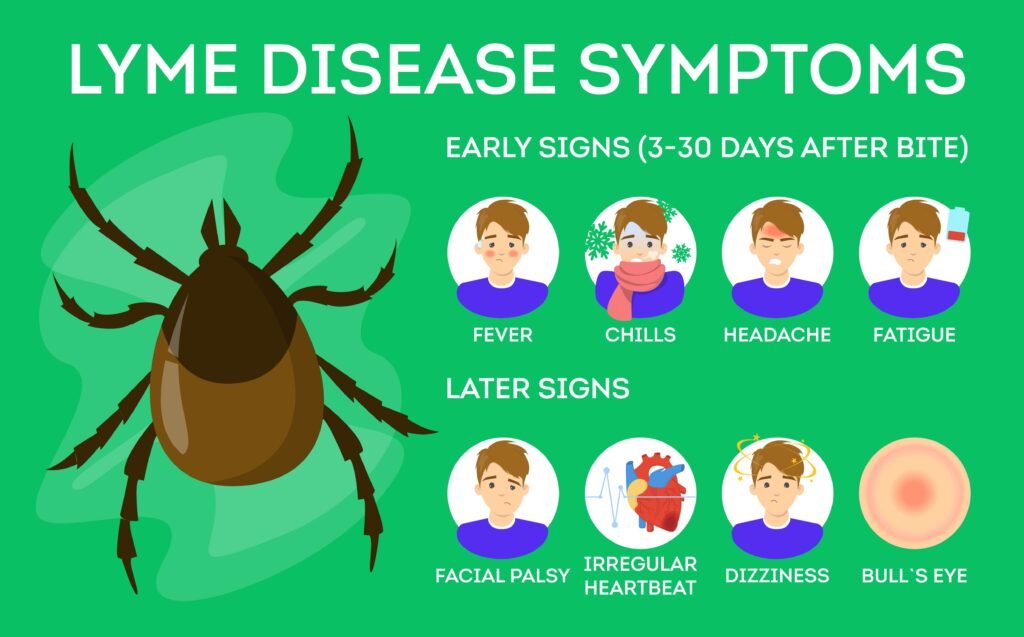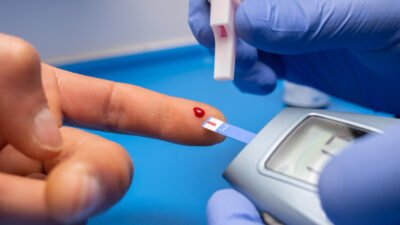Table of Contents
What causes Lyme disease? What is Lyme Disease? It is an infection caused by specific types of ticks causing a bacterial infection because they carry the Borrelia bacteria. In order to detect the infection generally blood tests are usually used to detect antibodies produced by the immune system of the body in response to the infection spread. But still due to its similarity with other disease a full diagnosing procedures should be applied in the situation.
How Is Lyme Disease Diagnosed?
According to the Centers for Disease Control and Prevention (CDC), diagnosing Lyme disease relies on a combination of:
- A person’s symptoms
- History of tick exposure
- And when needed, lab tests that detect antibodies produced by the immune system following infection. [³]
These antibodies remain in the body for several years—even after successful treatment—so results must be interpreted carefully.
Key Tests for Diagnosing Lyme Disease
Multiple different key tests should be applied in combine in order to detect Lyme disease. Including the following; physical exam, antibody blood test, western blood test, polymerase chain reaction test, antigen detection, and culture test.
| Test | Purpose | Sample Used | Accuracy Notes |
|---|---|---|---|
| Physical Exam | Detects visible symptoms like Erythema Migrans (a bullseye rash). | Visual inspection | May be enough for diagnosis in early stages. |
| Antibody Blood Test | Detects immune system response to Lyme bacteria. | Blood, joint fluid, or CSF | May return false negatives if done too early. [⁷] |
| Western Blot Test | Confirms positive antibody test by identifying specific Lyme protein bands. | Blood | Results may vary across labs. [⁸] |
| PCR (Polymerase Chain Reaction) | Detects genetic material of Lyme-causing bacteria. | Blood or body fluids | Highly specific but expensive and not widely used. [⁹] |
| Antigen Detection | Searches for Lyme-specific proteins in body fluids. | Blood, urine, joint fluid | Less common; still under evaluation. [¹⁰] |
| Culture Test | Grows bacteria from a sample to confirm infection. | Blood or fluid sample | Considered the most accurate but is slow and rarely performed. [¹⁰] |
Physical Examination of Lyme Disease
One of the most telling physical signs of Lyme disease is the presence of Erythema Migrans—a red rash that starts at the site of the tick bite and expands over days or weeks. The rash usually grows larger than 5 cm, forming a target-like appearance.
Although rashes can indicate many conditions, this rapid expansion is distinct to Lyme disease and can be sufficient for diagnosis, even in the absence of lab tests. [⁵][⁶]
Lyme Disease Antibody Testing
The Lyme disease antibody test checks for immune responses that occur when the bacteria enters the bloodstream. The body begins to produce specific proteins (antibodies) to fight the bacteria. While helpful, these tests are not definitive, especially during early infection or in people with weak immune responses. [⁷][¹]
Western Blot Test for Lyme specific bands
If the initial antibody test is positive, a Western Blot is typically used to confirm the result. The process involves:
- Breaking down the sample into bands representing different proteins.
- Comparing those bands to known Lyme disease profiles.
- A test is considered positive if 5 or more Lyme-specific bands are found.
⚠️ Note: Results may vary by lab, as different facilities use varying standards for interpretation. [⁸]
Additional Lyme Disease Tests
Although less common, the following tests may be used in specific cases:
1. PCR Test (Polymerase Chain Reaction)
- Detects DNA of Lyme bacteria.
- High specificity but not routine due to cost and complexity. [⁹]
2. Antigen Detection
- Searches for Lyme-specific proteins in bodily fluids.
- Limited use; still in experimental phases. [¹⁰]
3. Culture Testing
- Involves growing bacteria in lab settings.
- Considered the most accurate but takes a long time and isn’t widely used. [¹⁰]
Are Lyme Disease Tests Accurate?
Lyme disease tests can sometimes be inaccurate, especially early in the infection:
- False negatives are common because the body may not have produced enough antibodies yet—this can take up to two months after exposure. [¹²]
- Some tests may not detect all bacterial strains. [¹¹]
- A 2023 study published in Clinical Infectious Diseases highlighted the need for more advanced testing tools. [¹³]
Who Should Get Tested for Lyme Disease?
Testing is recommended if you:
- Have been bitten by a tick in an area where Lyme disease is common.
- Show early symptoms, especially if exposed to wooded or grassy environments.
Early Signs of Lyme Disease Include:

- A spreading bullseye rash
- Fever
- Chills
- Headache
- Fatigue
- Muscle or joint aches [¹⁴]
| Symptom | Description | When It Appears |
|---|---|---|
| Erythema Migrans (Bullseye Rash) | A red, expanding rash that appears at the site of the tick bite. It may resemble a target or bullseye. | 3–30 days after tick bite |
| Fever | Mild to moderate fever may occur along with the rash. | Often with or just after rash |
| Chills | Feeling cold and shivery, even with a fever. | Early infection phase |
| Headache | Can range from mild to severe and persistent. | Within first few days or weeks |
| Fatigue | Unusual tiredness or lack of energy, not relieved by rest. | Common in early stages |
| Muscle aches | Generalized body soreness, similar to flu symptoms. | Early to mid-stage |
| Joint pain | Intermittent pain and swelling, especially in large joints like knees. | May start early and worsen later |
| Swollen lymph nodes | Lymph nodes near the bite may become enlarged and tender. | 1–2 weeks post-infection |
🧠 FAQs
Q1: Can Lyme disease be diagnosed without a blood test?
A: Yes. A characteristic rash (Erythema Migrans) is often sufficient for diagnosis, especially in early stages.
Q2: Are Lyme disease tests 100% reliable?
A: No. Tests may give false results—especially early in infection. Combining clinical signs with test results gives better accuracy.
Q3: How long do Lyme antibodies stay in your body?
A: Antibodies can remain for several years, even after treatment—this can cause false positives.
Q4: What is the best test for Lyme disease?
A: A two-step approach: first an antibody test, then Western blot confirmation. PCR is used in rare, complex cases.
📚 References
- CDC – Lyme Disease: https://www.cdc.gov/lyme
- Mayo Clinic – Lyme Disease Tests
- MedlinePlus – Lyme Disease Blood Test
- Infectious Disease Society of America
- Johns Hopkins Lyme Disease Research Center
- Clinical Infectious Diseases Journal
- LabTestsOnline.org
- Western Blot Interpretation Guide
- NIH PCR Testing Guidelines
- Tick-Borne Disease Working Group Report
- NEJM: Challenges in Lyme Testing
- CDC Antibody Response Timing
- CID 2023 Diagnostic Accuracy Study
- WHO – Lyme Disease Symptoms
Read More: Discover the Latest Trends in Business, Technology, Neuroscience & Beyond






[…] Read More: ideafys – Lyme Disease […]